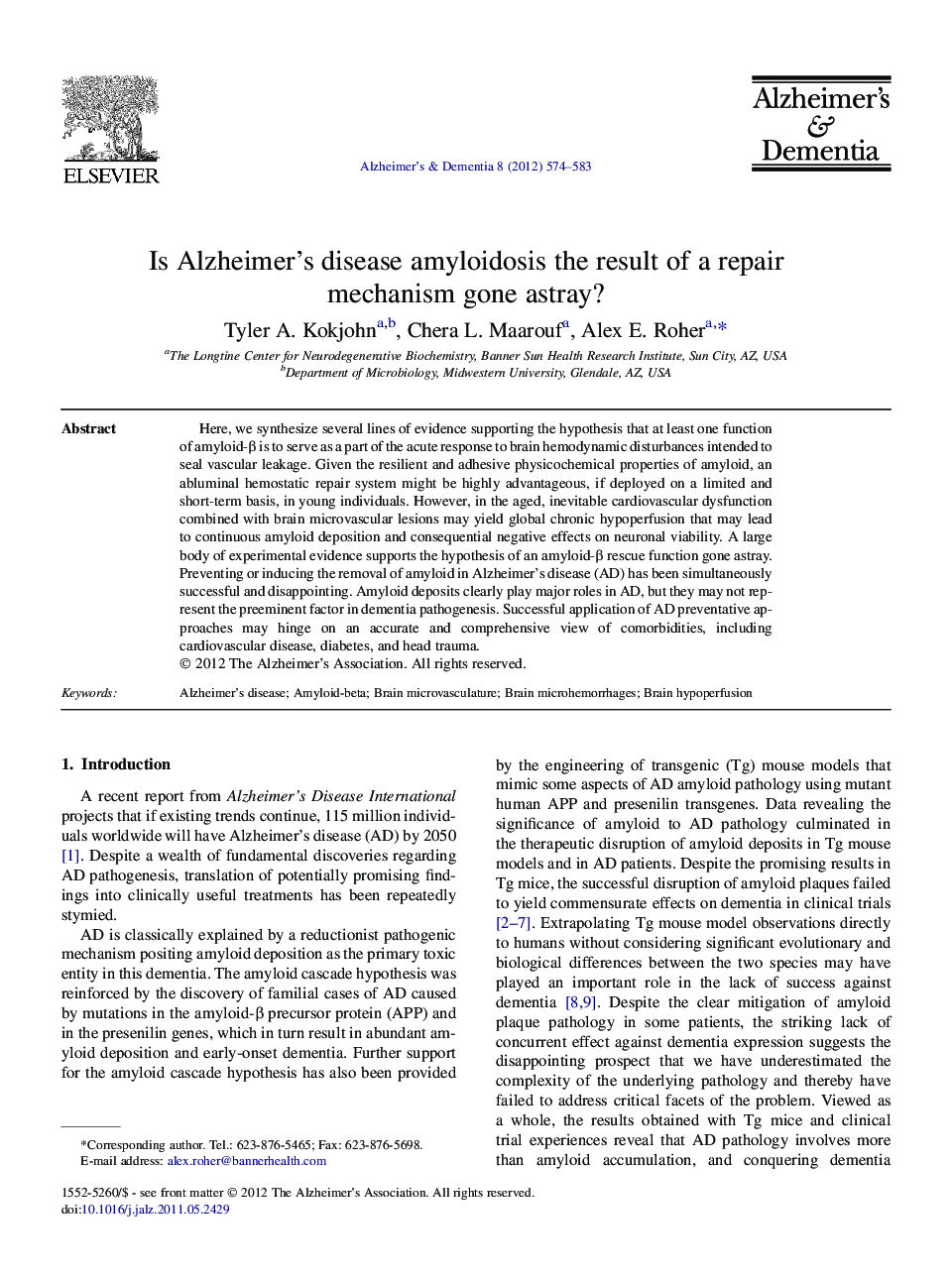| کد مقاله | کد نشریه | سال انتشار | مقاله انگلیسی | نسخه تمام متن |
|---|---|---|---|---|
| 5624032 | 1406235 | 2012 | 10 صفحه PDF | دانلود رایگان |

Here, we synthesize several lines of evidence supporting the hypothesis that at least one function of amyloid-β is to serve as a part of the acute response to brain hemodynamic disturbances intended to seal vascular leakage. Given the resilient and adhesive physicochemical properties of amyloid, an abluminal hemostatic repair system might be highly advantageous, if deployed on a limited and short-term basis, in young individuals. However, in the aged, inevitable cardiovascular dysfunction combined with brain microvascular lesions may yield global chronic hypoperfusion that may lead to continuous amyloid deposition and consequential negative effects on neuronal viability. A large body of experimental evidence supports the hypothesis of an amyloid-β rescue function gone astray. Preventing or inducing the removal of amyloid in Alzheimer's disease (AD) has been simultaneously successful and disappointing. Amyloid deposits clearly play major roles in AD, but they may not represent the preeminent factor in dementia pathogenesis. Successful application of AD preventative approaches may hinge on an accurate and comprehensive view of comorbidities, including cardiovascular disease, diabetes, and head trauma.
Journal: Alzheimer's & Dementia - Volume 8, Issue 6, November 2012, Pages 574-583